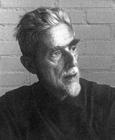
Click here to buy Sale Posters!
M.C. Escher Biography (1898 - 1972)
"For me it remains an open question whether it [his work] pertains to the realm of mathematics or to that of art." - M.C. Escher
 Maurits Cornelius Escher, called "Mauk" by his parents, was born in Leeuwarden, Netherlands on June 17, 1898. His father, George Escher, was a civil engineer; his mother, Sarah, the daughter of a government minister. Though family hopes had been that he would enter a career in architecture, he showed little promise during his formal schooling except in the areas of art and design.
Maurits Cornelius Escher, called "Mauk" by his parents, was born in Leeuwarden, Netherlands on June 17, 1898. His father, George Escher, was a civil engineer; his mother, Sarah, the daughter of a government minister. Though family hopes had been that he would enter a career in architecture, he showed little promise during his formal schooling except in the areas of art and design.
He would write later, "At high school in Arnhem, I was extremely poor at arithmetic and algebra because I had, and still have, great difficulty with the abstractions of numbers and letters. When, later, in stereometry [solid geometry], an appeal was made to my imagination, it went a bit better, but in school I never excelled in that subject. But our path through life can take strange turns."
His interest in drawing and printing techniques led to a meeting with R.N. Roland Holst an artist who influenced and trained young Maurits. "He strongly advised me to do some woodcuts, and I immediately followed his advice... It is wonderful work but far more difficult than working with linoleum."
In 1920 he met Samuel Jesserum de Mesquita, a graphic arts teacher. Escher was soon convinced that a graphic arts career would be better suited to his skills. De Mesquita gave Escher further training in woodcut printing techniques and encouraged him to experiment.
Escher traveled widely throughout Europe sketching and gathering ideas that would influence his later works. Particularly influential were the designs he encountered at the Moorish Alhambra Palace in Grenada. After his second visit there, he termed it "the richest source of inspiration I have ever tapped."
During one of his trips he met his future wife Jetta Umiker. They married the following year, on June, 12 1924. They went on to have three children, George, Arthur and Jan.
Though Escher had earned a reputation in European circles, his work was almost unnoticed in the United States until the 1950's when a major show and a Times Magazine article catapulted him onto the world stage.
Among Esher's greatest admirers were mathematicians who lauded his extraordinary visualization of mathematical principles. Considering his lack of an academic background, this was all the more remarkable. Yet he enjoyed grappling with and illustrating complex mathematical concepts, though he often thought he had come up short. One of his children noted, "The end of the cycle, making the first print, gave father a mixture of joy and sadness. It was exciting and satisfying to lift the paper from the inked wood for the first time, to see the finished print, crisp and immaculate, gradually appearing around the edge of the paper as it was carefully raised. But father had always a feeling of disappointment, of not having been able to depict adequately his thoughts."
Perhaps best known for his impossible buildings and figures, visual illusions and tessellations (complex interlocking forms), Escher also designed tapestries, postage stamps and murals. He also illustrated books. As his work evolved, it became more conceptual. His early love of portraits, Roman and Italian landscapes and of nature, eventually gave way to regular division of the plane. He often worked directly from structures in plane and projective geometry and was ultimately able to capture the essence of non-Euclidean geometries.
Long fragile of health, Escher died on March 27, 1972 surrounded by his family. He was 73.
Among M.C. Escher's most popular works are Eye, Relativity, High and Low, Waterfall, Hand with Globe, Three Worlds, Drawing Hands, Bond of Union, Ascending and Descending, Another World, Puddle, Skull with Cigarette, Three Spheres I, Mosaic II, Day and Night, Reptiles, Sky and Water, Still Life and Street, Metamorphosis I. Books on M.C. Escher: 29 Master prints, Harry N. Abrams; M. C. Escher, Taschen; M.C. Escher: Visions of Symmetry (New Edition), Harry N. Abrams; M.C. Escher: His Life and Complete Graphic Work (With a Fully Illustrated Catalogue), Harry N. Abrams; M.C. Escher: Coloring Book, Harry N. Abrams; The Pop-Up Book of M.C. Escher, Pomegranate Communications; M.C.Escher's Legacy: A Centennial Celebration, Springer.
�
�
Copyright � 2004- by Ace Toscano. All rights reserved.
(We are not affiliated with sites or advertisers promoted in paid ads appearing on this or any page.)
�
�
